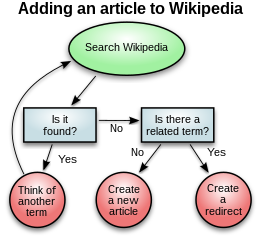The following shows ways in which data can be presented visually. It should have some relevance to the Universal Debating Project. http://www.p2pfoundation.net/Universal_Debating_Project
From Wikipedia, the free encyclopedia
For the British band, see Diagrams (band).
Further information: Chart
Contents
[hide]Overview[edit]
The term diagram in its commonly used sense can have a general or specific meaning:- visual information device : Like the term "illustration" the diagram is used as a collective term standing for the whole class of technical genres, including graphs, technical drawings and tables.[2]
- specific kind of visual display : This is the genre that shows qualitative data with shapes that are connected by lines, arrows, or other visual links.
In the specific sense diagrams and charts contrast with computer graphics, technical illustrations, infographics, maps, and technical drawings, by showing "abstract rather than literal representations of information".[2] The essence of a diagram can be seen as:[2]
- a form of visual formatting devices
- a display that does not show quantitative data (numerical data), but rather relationships and abstract information
- with building blocks such as geometrical shapes connected by lines, arrows, or other visual links.
Main diagram types[edit]
There are at least the following types of diagrams:- Chart-like diagrams, which take a collection of items and relationships between them, and express them by giving each item a 2D position, while the relationships are expressed as connections between the items or overlaps between the items; examples of such techniques:
- Graph-based diagrams; theses display a relationship between two variables that take either discrete or a continuous ranges of values; examples:
Specific diagram types[edit]
See also[edit]
| Wikimedia Commons has media related to diagrams. |
| Look up diagram in Wiktionary, the free dictionary. |
| Wikiquote has quotations related to: Diagram |
- Chart
- Diagramming software
- Diagrammatic reasoning
- List of graphical methods
- Mathematical diagram
- Plot (graphics)
- commons:Specific diagram types – gallery of many diagram types.
- commons:Commons:Diagram resources
References[edit]
- Jump up ^ Eddy, Matthew Daniel (2014). "How to See a Diagram: A Visual Anthropology of Chemical Affinity". Osiris 29: 178–196. doi:10.1086/678093.
- ^ Jump up to: a b c d Brasseur, Lee E. (2003). Visualizing technical information: a cultural critique. Amityville, N.Y: Baywood Pub. ISBN 0-89503-240-6.
- Jump up ^ Michael Anderson (1997). "Introduction to Diagrammatic Reasoning". Retrieved 21 July 2008.
- Jump up ^ Lowe, Richard K. (1993). "Diagrammatic information: techniques for exploring its mental representation and processing". Information Design Journal 7 (1): 3–18. doi:10.1075/idj.7.1.01low.
- Jump up ^ Bert S. Hall (1996). "The Didactic and the Elegant: Some Thoughts on Scientific and Technological Illustrations in the Middle Ages and Renaissance". in: B. Braigie (ed.) Picturing knowledge: historical and philosophical problems concerning the use of art in science. Toronto: University of Toronto Press. p.9
- Jump up ^ White, Jan V. (1984). Using charts and graphs: 1000 ideas for visual persuasion. New York: Bowker. ISBN 0-8352-1894-5.
Further reading[edit]
- Bounford, Trevor (2000). Digital diagrams. New York: Watson-Guptill Publications. ISBN 978-0-8230-1572-6.
- Michael Anderson, Peter Cheng, Volker Haarslev (Eds.) (2000). Theory and Application of Diagrams: First International Conference, Diagrams 2000. Edinburgh, Scotland, UK, September 1–3, 2000. Proceedings.















No comments:
Post a Comment